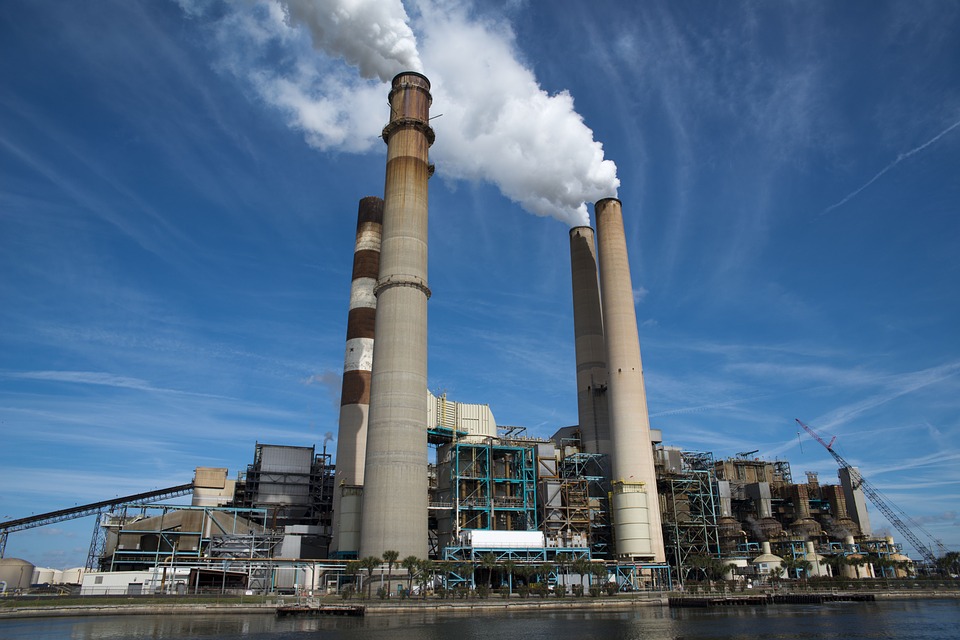When asked about the cost of coal, most Nigerians would list the monetary costs of coal power generation, such as the price of constructing the power plant and its operation and maintenance. Few would consider the environmental, health and social costs that might be attached to such large scale infrastructure projects. In this article, Ikenna Donald Ofoegbu argues from an environmental perspective that coal is a path to be followed with caution.
Globally, coal is counted as the dirtiest energy source. When considering the amount of energy gained per CO2 released, coal is the least efficient among mainstream fossil fuels. For every kilowatt of electricity generated, coal releases approximately twice the greenhouse gases releases that a conventional gas power plant would release. As such, coal is a major contributor to global warming and climate change. Right from mining, to transportation, storage, combustion and disposal of post-combustion wastes, coal development is a threat to human and environmental health.
History is replete with cases of large-scale hazardous events at coal mines. Although stricter safety standards and controls are now being employed the world over, the number of hazard cases from coal mines still remain. Mine workers are faced with a wide range of dangers. These include physical as well as chemical dangers. Workers are typically exposed to the risk of falling objects and mine collapse. In addition, significant exposure to dust and other chemical particles pose very serious threats to health, safety and life. Although these dangers highlight the impacts from coal mining operations, there are equally significant health concerns that are associated with the burning of coal for power.
Electricity generation from coal also results in significant pollution. Burning coal releases numerous toxic chemicals and particulates which can eventually settle in surface water. Given the health impacts of these particulates, huge costs may be incurred on the population in terms of increased health disorders and reduced life expectancy. According to a report by the Physicians for Social Responsibility – “Coal’s Assault on Human Health”, coal-fired power plants that sell electricity to the grid produce more hazardous air pollution in the U.S. than any other industrial pollution sources, and over 386,000 tons of air pollutants are emitted from over 400 coal plants in the U.S. per year. According to the report, pollutants from coal adversely affect all major organ systems in the human body and contribute to four of the five leading causes of death in the United States.
According to the Union of Concerned Scientists, in an average year, a typical coal plant (500 megawatts) generates the following amounts of air pollutants: 3.7 million tons of carbon dioxide (CO2), an amount equivalent to greenhouse emissions from felling 161 million trees; 10,000 tons of sulfur dioxide (SO2); 10,200 tons of nitrous oxides (NOx), equivalent to half a million late-model cars; 500 tons of small airborne particles; 220 tons of hydrocarbons; 720 tons of carbon monoxide (CO); 170 pounds of mercury; 225 pounds of arsenic; 114 pounds of lead, 4 pounds of cadmium; and other toxic heavy metals. These toxic metals can accumulate in human and animal tissue and cause serious health problems, including mental retardation, developmental disorders, and damage to the nervous system.
For example, SO2 causes acid rain and has the potential to cause lung damage, heart diseases and other illnesses. NOx lead to formation of smog, which inflames lung tissue and increases susceptibility to respiratory illness. Airborne particles (particulate matter) can cause bronchitis, reductions in lung function, increased hospital and emergency room admissions, and premature deaths. Heavy metals such as mercury cause learning disabilities, brain damage, and neurological disorders, while ingestion of arsenic (especially through water) can cause cancer. Coal ash, the hazardous waste that remains after coal is burned, may also chromium, which triggers stomach ulcers, anemia, and stomach and lung cancers; selenium, which in excess can cause impaired vision or paralysis; and boron, which can cause eye, nose, and throat irritation, or in large amounts damage to testes, intestines, liver, kidney, and brain. All of these effects are potentially lethal and can eventually lead to death.
Each year, particle pollution from coal power plants kills an estimated 13,000 people in the USA. In India alone, reports hold that as much as about 100,000 premature deaths result annually from coal power plants, with impacts obviously extending beyond local communities. This is because, pollutant metals such as lead and arsenic (from coal power plants) can travel beyond state lines, and fine particulate matter has a global impact.
Proliferation of pollutant-churning, coal-fired power plants around Nigeria may trigger issues such as poor outdoor air quality within localities in close proximity to the plants, decay in standards of living, and possibly associated industrial/labour strike actions resulting from agitation. Rather than providing the long sought after jobs, miners in India, Germany, the UK and China are losing their jobs due to mechanization and governments’ pull-out from coal. Thick smog has caused stay-ins and economic shutdown in countries such as China; similar occurrences could potentially cripple regional or even national productivity in a volatile economy such as Nigeria’s.
 Ikenna Donald Ofoegbu is an economist researcher. He has a master's degree in economics from the University of Ibadan. He is the Project Manager, Sustainable Nigeria project for the Heinrich Boell Foundation in Nigeria.
Ikenna Donald Ofoegbu is an economist researcher. He has a master's degree in economics from the University of Ibadan. He is the Project Manager, Sustainable Nigeria project for the Heinrich Boell Foundation in Nigeria.



